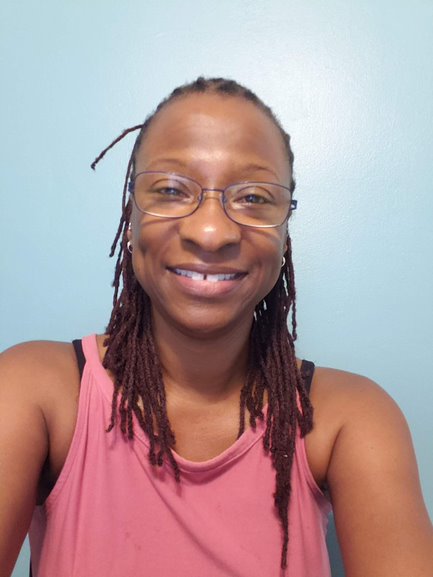EMOTIONAL WELLNESS
As we consider emotional wellness, it is fitting to find practical ways to deal with the country and world’s current situations. After all, we want to do more than survive – we want to thrive!
CHANGING TIMES
Most people have grown up hearing their elders complain that things are not the way they used to be. They were right. From elevated rates of violence to increased and varied drug use, global warming, COVID-19, social justice issues, and the possibilities of living on other planets; it’s clear the world has been changing.
In some ways the changes are positive—take the benefits of technology for instance. But in other ways, the changes are frightening and confusing. One truth is that we will not escape living without varying levels of stress. The negative stress as we perceive it can cause anxiety and lead to other illnesses. How we handle the unpreventable stresses that accompany life is critical. It is important to focus on what is within our control to help solve difficult issues. To maintain sanity and act positively to solve issues, we must keep calm, focus on what is within our control to do, have people we love and trust in our lives, and who hold us accountable. Also helpful to our life-survival kit is engaging positive practices such as prayer, meditation, and yoga’s ha-kriya. As a certified yoga instructor and practitioner for nearly 20-years, I find all three beneficial.
While many argue it is best to maintain continuous communion with a deity, others don’t believe in one at all. And there are many avenues of belief between the opposing sides. So how does one maintain a clear head amid the world’s latest chaotic situations? Some people turn inward, some look outside themselves to a deity, or seek help from trusted friends and family, and … others strike out with the intent to harm due to driving fear.
Acting from fear does not solve issues long-term. However, prayer, meditation, and yoga have proven to be beneficial practices over time. People often confuse or even combine prayer and meditation. After all, they both involve mindful and deliberate, focused attention to the release of things that bind. In the practice of yoga, kriyas also help with tension release, cleansing, and breathing. The following information will answer questions and may even start beginners on their way to stress release.
PRAYER & ITS ADVANTAGES
Though some definitions generalize its true meaning and merely label prayer as “supplication or intercession directed toward a deity (a god),” prayer is far more multifaceted, deliberate, and deeply defined. It is intentional and focused communication with God. And yes, prayer involves supplication and intercession; but it is a daily or multiple times-a-day practice in many religions. Prayers are heartfelt words.
So, how does one have a conversation with God? Outside of positive intentions, there is no one protocol. Writer C. S. Lewis, author of Chronicles of Narnia and How to Pray: Reflections & Essays, suggests the following order in his works: adoration, confession, thanksgiving, and prayer requests. In many faiths, it is a practice to praise God. For instance, Muslims state, “God listens to the one who praises Him,” states the Sahih Muslim, Book 4. The Jewish Tehillim – Psalms – Chapter 4 says the God of righteousness relieves the one who prays and listens to prayer.
It is an awareness of God’s continuous presence, and a reliance on God, that brings calm, peace, and understanding.
BEING PRESENT IN MEDITATION
Just as one can pray anywhere, one can meditate anywhere. The beneficial practice involves stilling the body and calming the mind to control thinking. Thinking controls how people feel. Key meditations include:
- breathing meditation (pranayama: mind focused on each breath)
- guided meditation (with practitioners responding to directives from a guide)
- mantra meditation (wherein meaningful phrases are repeated with resonance and intent)
People may practice turning off their thoughts to notice the real world in the given moment. Meditation is another way to quiet the mind.
For my meditative practice, I found it helpful to recite a mantra or an affirmation. Mantras are words that can be “spoken, sung, or thought,” according to Vani Devi’s Yoga Sequences Companion. She adds that mantras can be “one or more syllables, a phrase, a sentence, or many sentences,” that speaks to your life personally, common ones include Om (said to be the first sound of the created Universe).
Amen is another powerful word often used in agreement, or more specifically “it is so.” The latter definition is how the term is commonly used today, but there are deeper, more implicit meanings. It is an interjection, a verb, a noun, and an adjective. For instance, the site, Bible Study Tools, tells us Amen also means “take care,” truth, and blessings, among other key definitions. Aysel Gunar’s book, Find Your Mantra, reminds us that we are in control of our minds, and encourages readers to “believe that [we] can do it as long as we believe we have thought control (15). Mantras vary in length, are focused on, and repeated frequently to still the mind.
Meditation practitioner and teacher, Light Watkins, espouses that “true mindfulness is you not thinking about being mindful. Getting completely lost in the moment, that’s true mindfulness. That’s a possibility for every one of us.”
DISTINGUISHING MANTRAS & AFFIRMATIONS
Mantras and affirmations can be used during meditative sessions or not. They are also interchangeable. Mantras are thousands of years old. These syllables, words, or phrases were developed to help people move through challenging situations. Repetitive mantras are focused and help practitioners retreat from a noisy, chaotic world to a more harmonious space. It’s always best to find a mantra that suits your life and situation. However, mantra examples may include “Each day I will live a life to be proud of,” or “I am a good person who deserves good things.” The latter is a mantra that has worked for me for years.
We live in a world where the lines between truth and fiction are frequently blurred. We internalize too many lies and feed the negativity by continued focus and self-blame. Another popular saying is that we can sometimes be “our own worst critics.” While we often have to step back and look at our lives objectively, it’s not beneficial to focus on our shortfalls without thinking of or asking for helpful solutions. That is when we become our worst enemy. We must assess our situations, look within, and find the right mantras that speak to our lives.
Affirmations, developed by neuroscientists as recently as 1970s, on the other hand, “tend to be complete sentences addressing something we wish to have or be as if we already have it in the present moment” according to the Institute for Integrative Nutrition. Affirmations can include a phrase like “I feel calm and fulfilled,” or “I am capable of solving my problems efficiently.” It is most helpful to repeat the phrases throughout contemplative moments, but they can be continuous thoughts and spoken throughout the day for focus.
A CLEANSING HA-KRIYA
All yogic breathing is helpful for stress management. The ha-kriya is associated with kriya yoga, which works to cleanse, energize, and balance the body, according to The Yoga Bible. Ha-kriya is a fun, mindful, releasing, and energizing breathwork exercise that builds stamina, evokes confidence, and builds self-esteem. Think of it as yogic martial arts! Body, mind, spirit, and focus must work together. Ha means sun and kriyas are movements that work with the breath to cleanse and energize.
To practice ha-kriya, one must approach a physical space of practice with mindfulness. Sitting in easy pose, or in a sturdy chair without wheels, or standing will work. However, I prefer to stand. Do the following to practice ha-kriya.
- Stand with legs about hip-width apart or a bit wider.
- Bend the knees into a slight squat.
- Bring arms to your sides.
DO THE FOLLOWING 8 TIMES
- Inhale deeply while extending the arms forward. Make fists.
- Exhale sharply while pulling your fisted hands to your sides while saying “ha!”
DO THE FOLLOWING 8 TIMES
- Inhale deeply as you open your arms to the sides and sweep them up to the heavens. Make fists.
- Exhale sharply while pulling your fisted hands down to your sides while saying “ha!”
- Repeat numbers 4 through 7 four times, then 4 times, then 2 times; and finally, 1 time each.
PRACTICE ONE OR ALL
None of these suggestions are magic potions. They involve time, dedication, and work. So how do prayer, meditation, and yoga – specifically, ha-kriya help release tension, bring assurance and calm in turbulent times? One answer is self-awareness — recognizing turmoil, anxiety, and fear within us to be dealt with. Secondly, with intent, the spotlight will shine on your ability to pray sincerely and to take better care of yourself and others. Practicing ha-kriya releases tension. It gives direction to your energy and can produce a stronger body and mind, and clearer breathing. All the above work together for a more energetic and stable YOU!
BE OPEN: GIVE THE PRACTICES(S) TIME
Practice with patience. It is important to try each method consistently for about two months or more, before moving on to another practice. Additionally, you should practice 3 – 5 minutes once or twice daily at the beginning and slowly ramp-up the time.
Forgive yourself for “not getting it right” the first few times. While one can find peace in the middle of chaos, initially, it will be best to find a quiet space to help focus the mind inward. Understand there are other options to clearing one’s head and space as well. Make sure you self-assess honestly and be sure to check in with your accountability partner(s), whether they are family and friends or spiritual leaders, for support. Practicing any, or all of these methods regularly can ensure stability and mental and emotional wellness.


